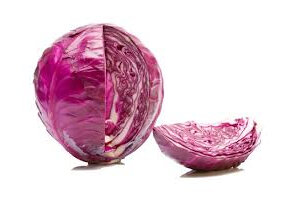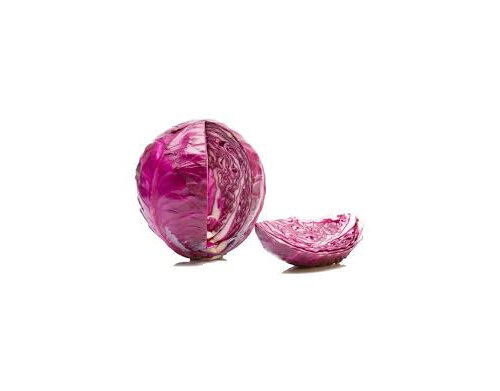IMPORTANT! If ordering for delivery outside of Timaru, please add Frozen Chiller Pack(s) to your order HERE
Good solid heads - Cruiciferous vegetable, who doesn't love a summer slaw or stirfry using cabbage. Great also for making your organic sauerkraut.
Cabbage has a round shape and is composed of superimposed leaf layers. It is a member of the food family traditionally known as cruciferous vegetables and is related to kale, broccoli, collards and Brussels sprouts.
The word "brassica" translates in Latin as "cabbage," and this word is being used more and more by researchers to refer to the entire group of cruciferous vegetables. You'll find many plant scientists now using the Latin word Brassicaceae and the phrase " brassica vegetables" instead of Latin word Cruciferae and the traditional phrase "cruciferous vegetables" when referring to cabbage, kale, broccoli, collards and other foods in this vegetable subgroup.
Because cabbage's inner leaves are protected from the sunlight by the surrounding leaves, they are oftentimes lighter in color. There are three major types of cabbage: green, red, and Savoy. The color of green cabbage ranges from pale to dark green. Both green and red cabbage have smooth-textured leaves. Red cabbage has leaves that are either crimson or purple with white veins running through it. The leaves of Savoy cabbage are more ruffled and yellowish-green in color. Red and green cabbage have a more defined taste and crunchy texture as compared to Savoy cabbage's more delicate nature. Bok choy as well as Chinese (Napa) cabbage are other varieties of cabbage available. Bok choy has a mild flavor. Chinese cabbage, with its pale green ruffled leaves, is great to use in salads.
Sturdy, abundant, and inexpensive, cabbage is a longstanding dietary staple throughout the world and is so widely cultivated and stores so well that it is available throughout the year.
History
Cabbage has a long history of use both as a food and medicine. It was developed from wild cabbage, a vegetable that was closer in appearance to collards and kale since it was composed of leaves that did not form a head.
It is thought that wild cabbage was brought to Europe around 600 B.C. by groups of Celtic wanderers. It was grown in Ancient Greek and Roman civilizations that held it in high regard as a general panacea capable of treating a host of health conditions.
While it's unclear when and where the headed cabbage that we know today was developed, cultivation of cabbage spread across northern Europe into Germany, Poland and Russia, where it became a very popular vegetable in local food cultures. The Italians are credited with developing the Savoy cabbage. Russia, Poland, China and Japan are a few of the leading producers of cabbage today.
Sauerkraut, a dish made from fermented cabbage, has a colorful legacy. Dutch sailors consumed it during extended exploration voyages to prevent scurvy. Early German settlers introduced cabbage and the traditional sauerkraut recipe were introduced into the United States. As a result of this affiliation, German soldiers, and people of German descent were often referred to as "krauts."
Health Benefits - lots of research to be found online :)







